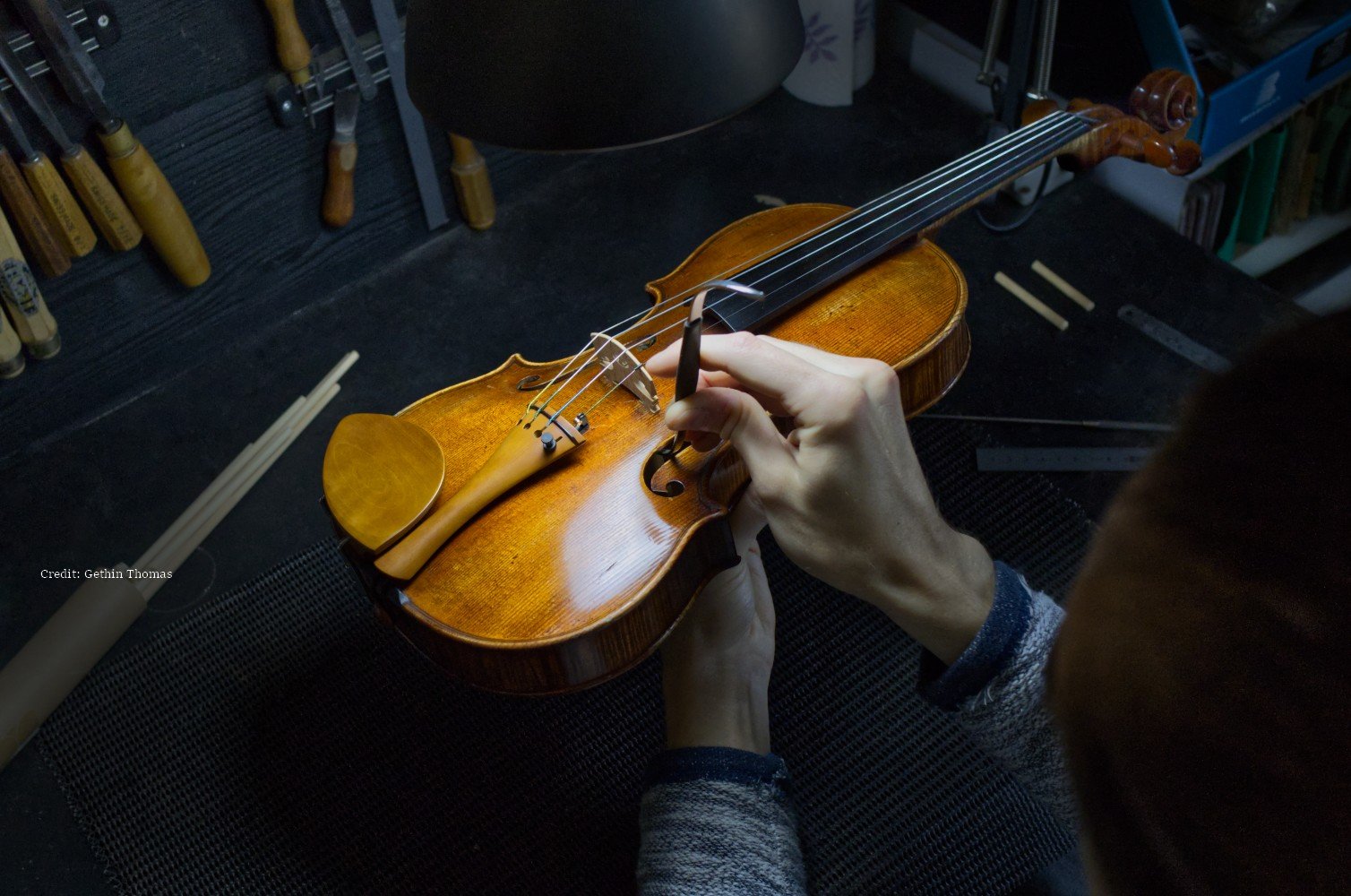professional sound adjustment
Each instrument is unique with its own personal tone.
But did you know that you can get a completely different sound within the same instrument ?
A lot of factors are to be considered when we talk about the sound of an instrument. If it is played regularly, the more often an instrument is being played the more its wood is encouraged to vibrate and respond to harmonics and frequencies, its tone gets richer.
Strings have an important role to play in the production of sound and so does your bow ! But one of the major things you can do to alter the voice of your instrument is to adjust its sound.
Wether you need your instrument to be more powerful, quieter, brighter, clearer, grittier or more focused, your musical instrument is able to produce a completely different sound to the one you are used to !
A soloist will tend to have the need for a violin that is more powerful or open, in order to be heard across a concert hall; whereas someone playing traditional music in a pub will want a sweeter but quieter sound.
Many things are to be considered: The position & the tension of the soundpost, the weight of the tailpiece, the position of the bridge, the size and shape of the F-hole, the shape and height of the top-nut & saddle, as previously mentionned, the choice of strings and the amount of pressure they exert on the belly of the instrument.
It is recommended to have your sound adjusted during Fall & Spring, when the humidity in the air changes the most. But each instrument is different and some will need it more than others, some are more temperamental than others whereas some are more stable.
“Kevin really understands all the factors that affect a violin’s sound and worked patiently and methodically with me to get my violin sounding the best it has in the 30 years I’ve played it.”
- Christopher Eastman - Soloist, Torbay Symphony Orchestra



